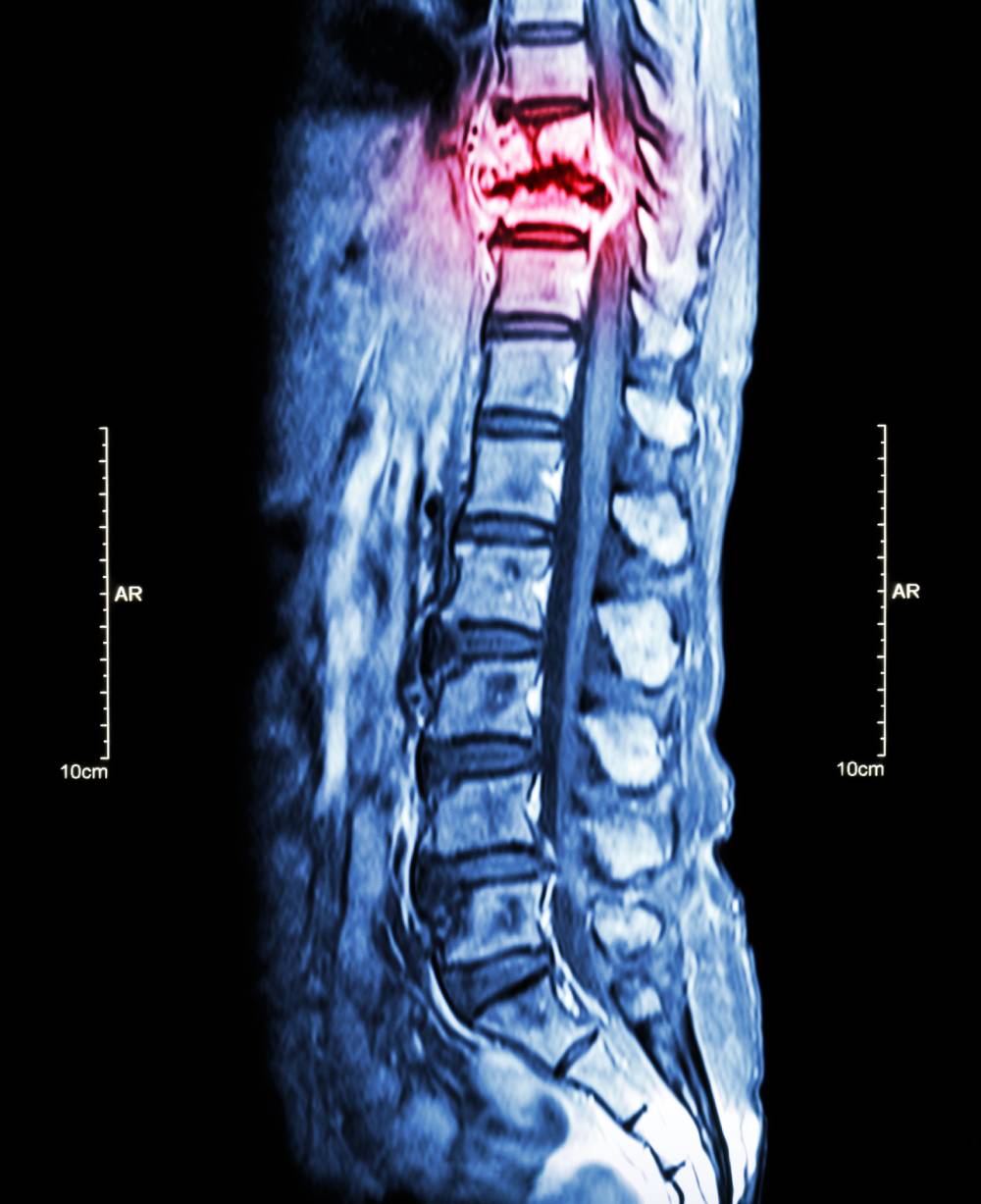One of the most common non-emergent medical complaints is back pain. Incapacity due to back pain constitutes an enormous healthcare burden in the U.S.: for example, annual reports show that it is consistently one of the largest contributors to long-term disability and loss of work years.1 Moreover, it is estimated that as much as 80 percent of the American population will experience chronic back pain within their lifetime.2 Despite its prevalence, back pain is notoriously difficult to diagnose. One substantial obstacle is locating the anatomical source of discomfort in order to determine an optimized treatment plan. For this reason, medical imaging is commonly employed as a diagnostic aid for back pain.
Physicians tend to take medical images of the spine after traditional physical examinations fail to reveal any obvious abnormalities. The most common types of imaging for the diagnosis of back pain are MRI, CT scans, and X-rays. A plain X-ray is sufficient when the pain is bone-derived, whereas an MRI can reveal much more about the surrounding tissue and joints. However, because MRIs are considerably more costly, patients may resist having one done. CT scans provide a 3D image of the spinal region but are similarly expensive. There are therefore a number of pros and cons to each approach, and the best course of action depends entirely on the patient’s specific situation.
Though imaging has become an integrated practice in the assessment of back pain, recent studies have called into question its efficacy. For example, a systematic review and meta-analysis by Chou et al. analyzed a number of randomized controlled trials which evaluated the impact of lumbar imaging.3 The authors evaluated pain, function, quality of life, mental health, and patient-reported improvement. Surprisingly, there were no significant differences in either short or long-term outcome between the patients that were imaged and controls. The authors therefore concluded that, given the costly nature of imaging and its apparent lack of utility, it should not be a routinely included in the diagnosis and evaluation of lower back pain.
Despite some discouraging evidence concerning the utility of medical imaging for diagnosing back pain, there are some cases in which imaging is highly recommended. Back pain is a symptom of many neurodegenerative disorders. If this is the case, imaging may speed up diagnosis and help to characterize the stage of disease progression. Physicians should therefore assess for other red flags which may indicate an underlying neurodegenerative disorder – for example, muscular tremors, cognitive decline, seizures, or improper muscular coordination – when deciding whether imaging is necessary.4 Additionally, in cases of acute trauma to the spinal region, it may also be helpful to visualize the exact damage that is causing the back pain.
Taken together, evidence suggests that medical imaging may not be the best strategy for the diagnosis of non-specific back pain. However, because imaging can be helpful in certain scenarios, physicians may have to make an educated guess about the best course of action. Therefore, the utility of medical imaging to diagnose back pain should be considered on a case-by-case basis.
References
1. Murray, C. J., Atkinson, C., Bhalla, K., Birbeck, G., Burstein, R., Chou, D., Dellavalle, R., Danaei, G., Ezzati, M., Fahimi, A., Flaxman, D., Foreman, Gabriel, S., Gakidou, E., Kassebaum, N., Khatibzadeh, S., Lim, S., Lipshultz, S. E., London, S., Lopez, … U.S. Burden of Disease Collaborators (2013). The State of US Health, 1990-2010: Burden of Diseases, Injuries, and Risk Factors. JAMA, 310(6), 591–608. https://doi.org/10.1001/jama.2013.13805
2. Urits, I., Burshtein, A., Sharma, M., Testa, L., Gold, P. A., Orhurhu, V., Viswanath, O., Jones, M. R., Sidransky, M. A., Spektor, B., & Kaye, A. D. (2019). Low Back Pain, a Comprehensive Review: Pathophysiology, Diagnosis, and Treatment. Current Pain and Headache Reports, 23(3), 23. https://doi.org/10.1007/s11916-019-0757-1
3. Chou, R., Fu, R., Carrino, J. A., & Deyo, R. A. (2009). Imaging strategies for low-back pain: systematic review and meta-analysis. Lancet, 373(9662), 463–472. https://doi.org/10.1016/S0140-6736(09)60172-0
4. Koh, J., & Ito, H. (2017). Differential diagnosis of Parkinson’s disease and other neurodegenerative disorders. Japanese Journal of Clinical Medicine, 75(1), 56–62. https://pubmed.ncbi.nlm.nih.gov/30566295/
